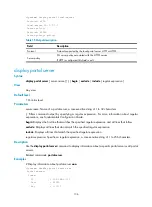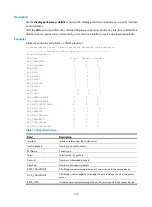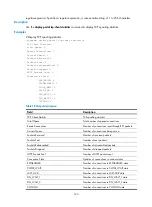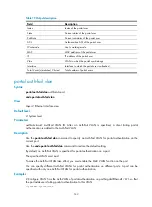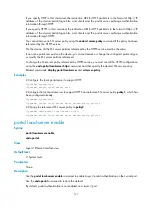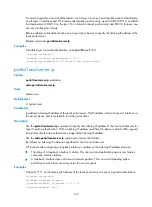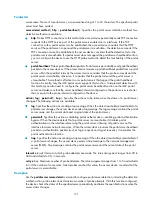
147
If you specify HTTP in this command, the redirection URL for HTTP packets is in the format of http://
IP
address of the device
/portal/logon.htm, and clients and the portal server exchange authentication
information through HTTP.
If you specify HTTPS in this command, the redirection URL for HTTP packets is in the format of https://
IP
address of the device
/portal/logon.htm, and clients and the portal server exchange authentication
information through HTTPS.
You cannot remove an SSL server policy using the
undo ssl server-policy
command if the policy has been
referenced by the HTTPS service.
On the device, all the SSL server policies referenced by the HTTPS service must be the same.
If an online portal user exists on the device, you cannot remove or change the configured protocol type,
or modify the SSL server policies referenced.
To change the SSL server policy referenced by HTTPS service, you must cancel the HTTPS configuration
using the
undo portal local-server https
command, and then specify the desired SSL server policy.
Related commands:
display portal local-server
and
ssl server-policy
.
Examples
# Configure the local portal server to support HTTP.
<Sysname> system-view
[Sysname] portal local-server http
# Configure the local portal server to support HTTPS and reference SSL server policy
policy1
, which has
been configured already.
<Sysname> system-view
[Sysname] portal local-server https server-policy policy1
# Change the referenced SSL server policy to
policy2
.
[Sysname] undo portal local-server https
[Sysname] portal local-server https server-policy policy2
portal local-server enable
Syntax
portal local-server enable
undo portal
View
Layer 2 Ethernet interface view
Default level
2: System level
Parameters
None
Description
Use the
portal local-server enable
command to enable Layer 2 portal authentication on the current port.
Use the
undo portal
command to restore the default.
By default, portal authentication is not enabled on a Layer 2 port.




